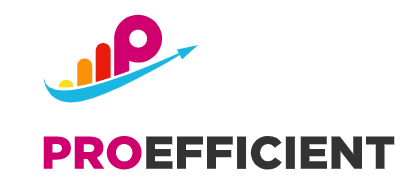Ask away?
What are Toner Cartridges?:
Toner cartridges are consumable products used by laser printers in the process of printing. Toner cartridges contain a fine powder, called “toner” that is made up of carbon, plastic, and colouring agents. During the process of printing, the cartridge dispenses the toner onto a page of paper creating a printed image. Once the toner is spent, the cartridge must be removed from the printer and replaced.
What are different types of toner cartridges?
There are three types of toner cartridges: OEM, Compatible, and Refurbished. OEM or Original Equipment Manufacturer cartridges are sold by the printer manufacturers under their brand name. Typically, these cartridges are manufactured in low cost locations like China. However, the OEM cartridges are up to 200% more expensive than the compatible cartridges because of the brand value and high cost structures of the Original Equipment Manufacturers.
Compatible toner cartridges are sold under the brand name of the compatible cartridge distributor, hence they are manufactured at the same low cost locations as the OEM cartridges, typically by the same factories who manufacture for the OEMs.
Therefore, the print quality of compatible cartridges is at par with the OEM cartridges.
Refurbished toner cartridges are cartridges that have been used once (or more) and undergone a remanufacturing process that involves adding more toner and replacing worn or soon-to-be worn components.
Can I cancel or change my order?
Your printer warranty will be voided by the printer manufacturer only if the damage to the printer was caused because of using the non-OEM cartridges. Should Proefficient compatible cartridges be the sole cause of any printer damage, Proefficient guaranteed that it will repair, refund or replace the printer.
For example, HP Printer Warranty states: “The use of non-HP print cartridges does not affect either the warranty or any maintenance contract purchased from Hewlett-Packard. However, if an HP LaserJet printer failure or printer damage is found to be directly attributed to the use of any non-HP product, the repair will not be covered under the warranty or HP maintenance contract. In such cases, standard time and materials charges will be applied to repair
Compatible toner cartridges are sold under the brand name of the compatible cartridge distributor, hence they are manufactured at the same low cost locations as the OEM cartridges, typically by the same factories who manufacture for the OEMs.
Therefore, the print quality of compatible cartridges is at par with the OEM cartridges.
Refurbished toner cartridges are cartridges that have been used once (or more) and undergone a remanufacturing process that involves adding more toner and replacing worn or soon-to-be worn components.
When and how to change the printer cartridge? – Detailed instructions
When and how to change the printer cartridge? – Detailed instructions
Following are the triggers for the need to change the cartridge
- Printer gives a “low toner” message.
- Printout quality is not up to the mare / looking faded
- The print output is with showing some repetitive defect
Following are the steps to be followed to change the cartridge
- Choose the correct Proefficient cartridge model compatible with the laser printer model
- Switch of the power to the printer
- Open the top cover
- Remove the old cartridge by pulling it up and away from the printer without applying heavy force.
- Unpack the new cartridge
- By using the tab on the side of the cartridge, remove its rip-strip. Do this gently so that the toner doesn’t spill out. If at all it gets in contact with the body skin of the person, get it washed with cold water only. Hot water is to be avoided as it tends to settle the toner on the body. If the rip-strip is not removed, the printer will print only blank pages.
- Place the cartridge into the same slot from where the old one was removed; with the correct alignement and a gentle push, sense that it slides in easily. Never apply heavy force; a need for such force would almost always mean that the cartridge being used is not compatible.
- Close the top cover, switch the printer on and take a few test printouts.
Care must be taken to avoid long exposure of cartridge to the light; its a good practice to always keep it in the black cover whenever it is not in the printer slot.
How to address print quality problems?
The list given below is representative of the common problems faced and it is not an exhaustive one.
| Problem observed | Possible Solution |
| Dark Streaks on the printout | Clean the printer, the coronas and the oiler belt |
| Dark background or dirty prints | Clean the printer, the coronas and the oiler belt |
| Repeating spot patterns | Clean the printer and the oiler belt |
| Prints are with double images | Clean the oiler belt
Ensure that the hot roll shield is up |
| Print is too light | Clean the coronas. |
| Print has white streaks | Clean the coronas.
If necessary, remove the coronas and look for forms chads in the wire or corona housing |
How to judge print quality?
- Text Prints
At the smallest font size, the individual letter should be legible and fully formed without breaks and they should not bleed into one another. Medium size fonts should be crisp with no fuzzy edges. The largest bold fonts should be filled with a solid tone.
- Graphics Prints
For several geometric shapes of different size and shading, the outlines should be crisp with smooth curves. The inside areas of solid colors should appear dense and evenly shaded.
- Photographs
The colour of the photo-prints when compared with the original photos, should be balanced, sharp,accurate and appealing
